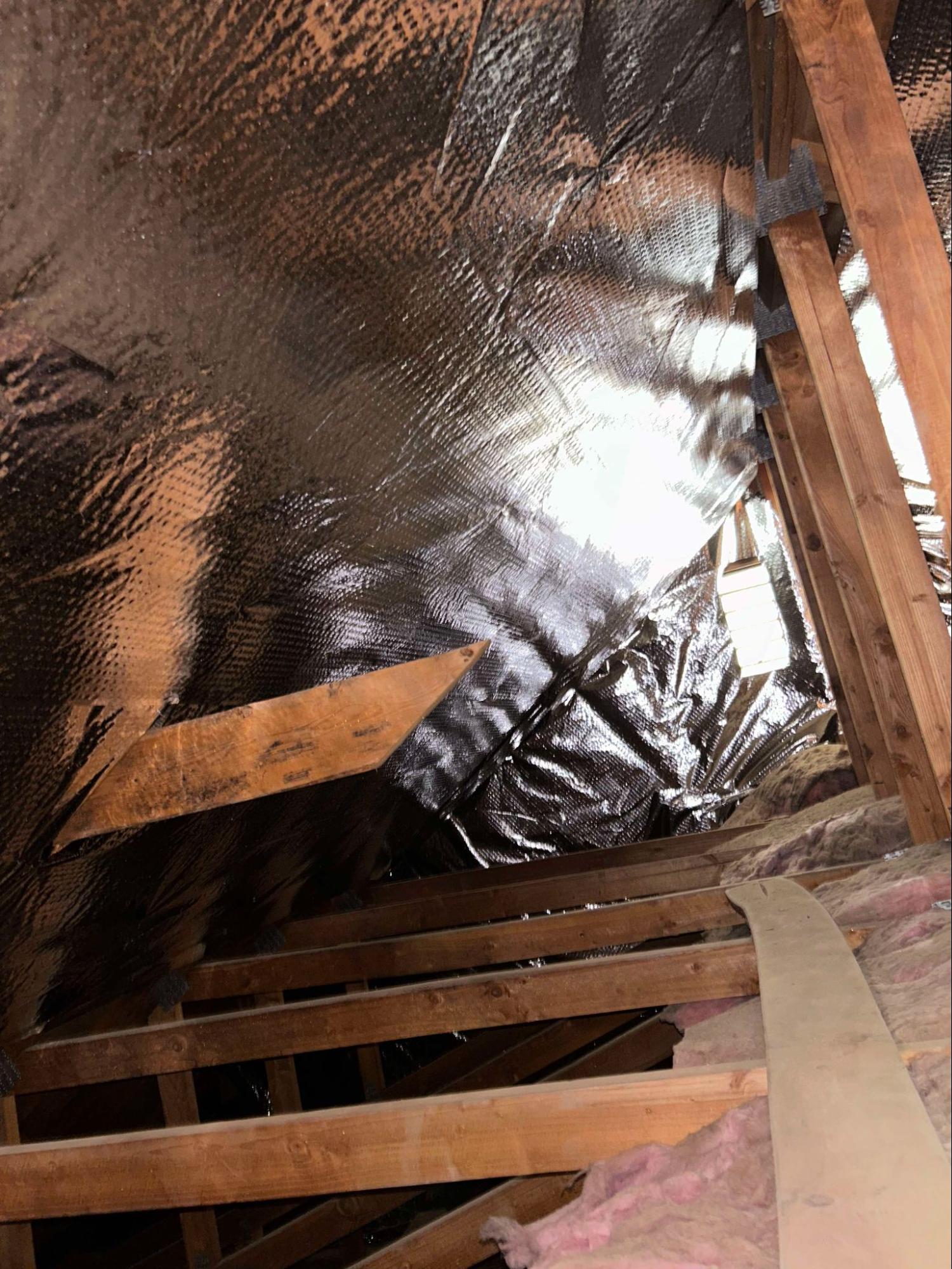The insulating properties of radiant barriers are described in contrast to regular insulation that only resists heat. Why is this important for attics?
Did you know? A radiant barrier reduces the radiant heat transfer from the underside of the roof to the other surfaces in the attic. That is why radiant barrier installation plays a significant role. It is not just any usual attic insulation. It does the smarter thing: it reflects the heat away from the house, keeping it cool. Conventional fiberglass insulation merely slows the transfer of heat; it certainly does not reflect it.
In this guide, we will understand how both work on insulation—how they diverge, and which one might be best for your application. So, read to the end.
How Radiant Heat Impacts Your Home
To understand the difference, learn first what radiant heat is. The heat felt when the sun shines upon your roof is radiant heat. The heat then radiates down into your attic insulation and warms your house. Even the best insulation, fiberglass, cannot slow it down completely—it only reduces it. Now, just imagine a barrier that reflects most of that heat before it enters at all. That is what a barrier does.
Radiant Barrier in Action: What Makes It Unique
On the other hand, radiant barriers don’t trap heat like the conventional insulation in attics. Instead, they reflect as much as 97 percent of the radiant heat outside, away from the house:
Here’s how it works:
- Material: Mostly made from aluminum foil and sometimes with backing like cardboard or plastic.
- Placement: Put in the attic, below the roof, or over the rafters.
- Function: Reflects direct radiant heat instead of absorbing it.
This method of heat reflection makes radiant barriers an excellent choice for hot climates.
Traditional Attic Insulation: Still Important but Works Differently
Fiberglass insulation is most commonly found in homes. It reduces heat flow by conduction and convection and slows down the movement of heat from hot to cooler areas. In winter, keeping heat inside is indeed a good thing.
But when it turns summer, it is unable to stop the radiant heat entering from the roof. This is where radiant barriers come into play.
Quick Comparison Table: Radiant Barrier vs Traditional Insulation
| Feature | Radiant Barrier | Traditional Insulation (Fiberglass) |
| Works by | Reflecting heat | Resisting heat |
| Material | Foil-based | Fiberglass, cellulose, foam |
| Placement | Under the roof or attic rafters | In attic floor or wall cavities |
| Best for | Hot climates | All climates |
| Effectiveness against | Radiant heat | Conductive & convective heat |
| Heat reflection capacity | Up to 97% | Low (absorbs instead) |
| Energy savings (hot climates) | 5–10% on cooling costs | Moderate |
Benefits of Radiant Barrier in Attic Spaces
One of the smarter things to do when existing in a hot region is to install a radiant barrier. Here is why:
- It can lower attic temperature as much as 30°F.
- Reduce the cooling bills by 5-10% (U.S. Dept of Energy).
- Increase comfort in rooms directly beneath that attic.
- Allow the HVAC system to last longer, given less workload.
Pro Tip: Do it on new roofing or new construction for the ultimate coverage.
Where Traditional Insulation Still Wins
However good they may perform during summer, radiant barriers are superfluous where insulation fiberglass would otherwise be needed.
- Suitable for cold climates.
- Proves effective in maintaining heat during the winter.
- Here, it is more suitable for walls and floors, not just purely in the attic.
Therefore, a combination of the two suffices for all-season efficiency.
Use Cases: When to Choose Which
Radiant Barrier will suit you if:
- You are located in hot states.
- Your cooling bills are sky-high.
- You want a speedy upgrade with quick summer payback.
Fiberglass Insulation will be excellent if:
- You require insulation for wintertime.
- Your attic is lacking in insulation almost completely.
- You’re remodeling an old house.
Combo Strategy: Best of Both Worlds
Why not both? Many homeowners install attic insulation along with a radiant barrier.
This type of strategy:
- Reflects radiant heat, and
- Slows the radiant heat transfer
It’s like having a sun hat and sunscreen. The more protection, the better.
Stop letting the sun overheat your home! Having a radiant barrier becomes significantly more affordable and enhances comfort immediately. Upgrade now for a cooler, smarter home!
Final Thoughts: Ready to Reflect That Heat?
Radiant barrier insulation is different from traditional fiberglass insulation. It doesn’t absorb heat but reflects it back instead. This makes it apt for hot climates, which require heat-reflective properties.
You don’t need to suffer under that roof oven anymore; it’s time to take action. Visit My Insulation Guy for expert guidance on radiant barriers and regular attic insulation installation. We will show you how to use both for comfort and efficiency year-round. For more details, you can refer to our website or contact us.
FAQs
Q1: What is the main difference between radiant barrier and traditional insulation?
Radiant barriers reflect heat, whereas traditional insulation, such as fiberglass, controls heat transmission with absorption.
Q2: Is radiant barrier better than fiberglass insulation?
It’s not better, just different. A radiant barrier is more effective in refracting heat in tropical regions, whereas fiberglass is suitable for colder climate areas.
Q3: Can I install a radiant barrier over existing attic insulation?
Well, yes! It works even better in conjunction with existing attic insulation.
Q4: How much money can I save with a radiant barrier?
You would save up to 10 percent on cooling bills, especially in the sunny states.
Q5: Is radiant barrier safe and eco-friendly?
Yes, it is non-toxic and doesn’t outgas; in addition, it improves energy efficiency, making your house greener.

